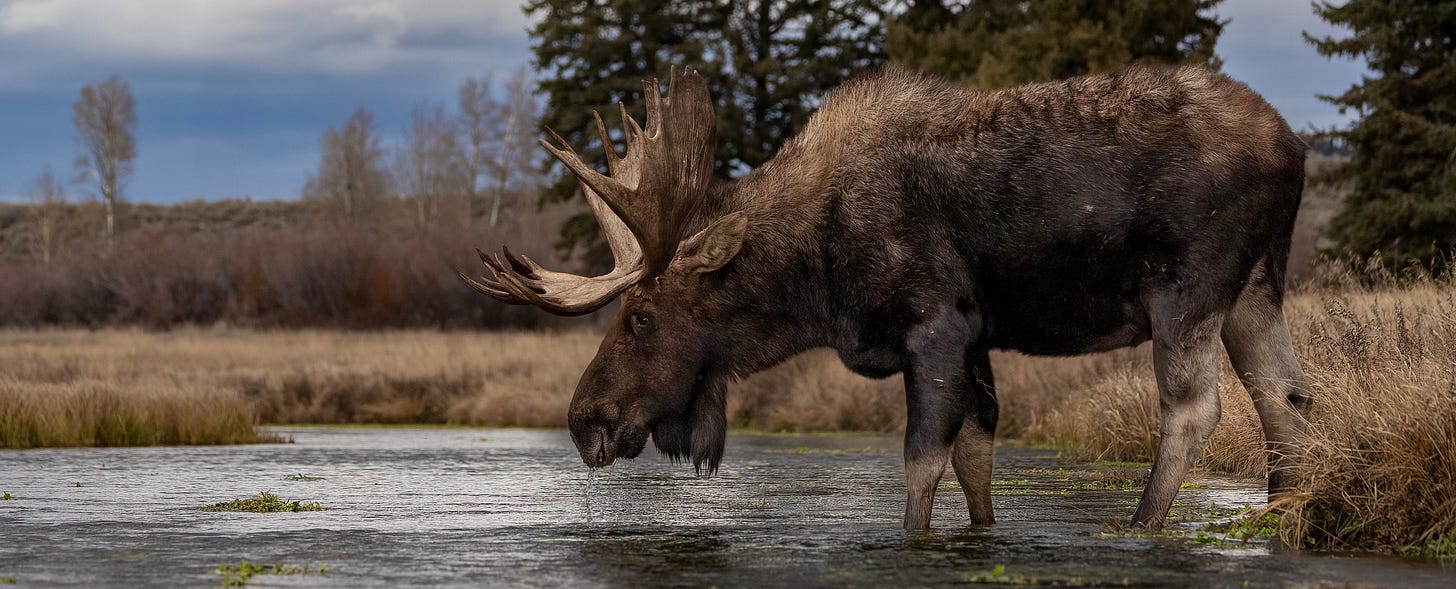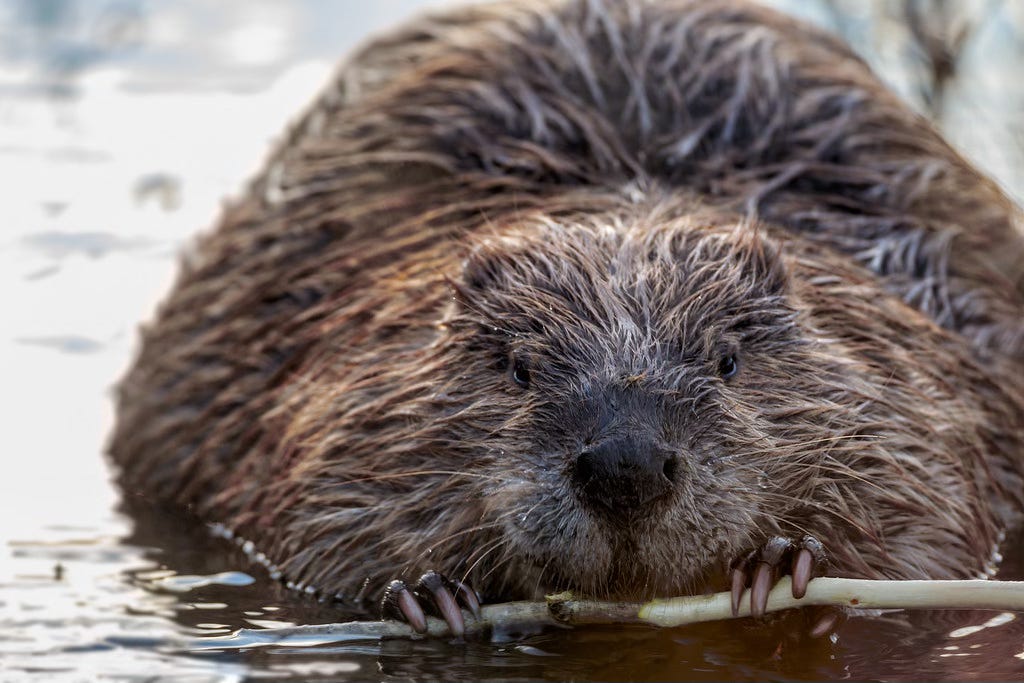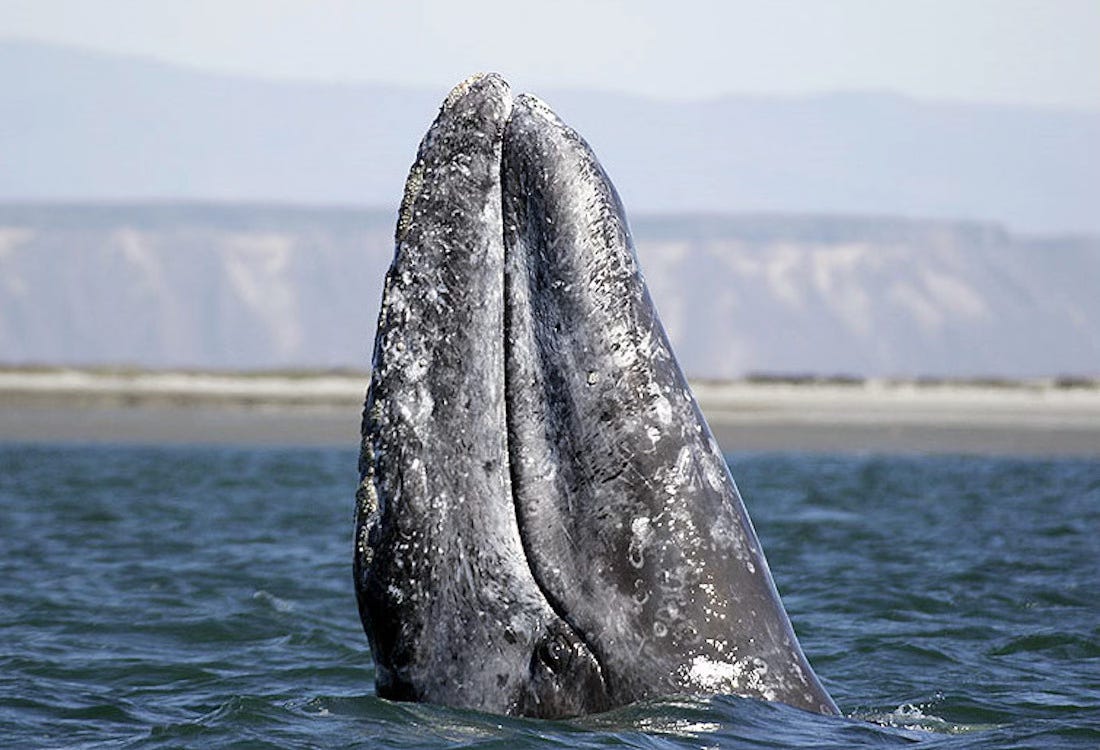Moose eat too many willows, and it's ruining everything
Despite our best intentions.
By Dan Fletcher
We have a winner for May’s FUZZ funds, and it wasn’t particularly close. With nearly 70 percent of the vote, Save Pangolins is the recipient of our community pot of $298 for May’s donation. (Thanks to new paid subscriber Kendra for upgrading just in time to add to the month’s total — you can join her, and 100% of your subscription will go to conservation causes every single month.)
To know pangolins is to love pangolins, and it’s easy to worry about them, too — they’re the world’s most trafficked animal, and even their locations in the wild are tightly-held secrets by conservationists doing whatever they can to help them hold on. And for those of you who want to know more about these scaly little guys, there’s a new Netflix documentary about them by the same team that made My Octopus Teacher:
I haven’t seen it yet, but I’ve heard it’s really good! It’s on my list for the week.
How the insatiable appetite of moose reshaped an entire valley
In the 1990s, Kawuneeche Valley in Colorado’s Rocky Mountain National Park was a textbook mountain wetland: tall willows lined the Colorado River, beavers engineered complex dam systems, and the ecosystem hummed with biodiversity. By 2021, that same valley had become a sparse grassland dotted with stubby willow remains and invasive plants. The transformation took just over two decades.
New research published this week in Conservation Biology reveals how this dramatic collapse unfolded — and offers a sobering lesson about the unintended consequences of wildlife management decisions, even well-intentioned ones.
The numbers tell a stark story. Tall willow coverage declined by 98% in just 20 years, from 1999 to 2019. Open water area — primarily beaver ponds — declined by 94% from 1953 to 2019. And as the environment changed, the biodiversity disappeared.
What makes this collapse particularly striking is that it happened despite decades of careful wildlife management. As early as 1968, Rocky Mountain National Park adopted "natural regulation" policies, allowing natural processes to control animal populations instead of using lethal management methods. The goal was a good one — to let nature manage itself without human interference.
But nature had already been fundamentally altered. Apex predators like wolves and grizzly bears had been eliminated in the late 19th and early 20th centuries. When elk populations were allowed to grow unchecked, there were no longer natural predators to keep them in balance.
Then came the moose. Colorado wildlife officials introduced moose to the state in 1978-1979, and they first appeared in the Kawuneeche Valley in 1980. While elk had always been part of this ecosystem, moose were newcomers to Colorado — and they brought an appetite that would reshape the entire valley.
And moose have a tremendous capacity to shape and change their environment. They’re willow connoisseurs in a way that elk simply aren't. Up to 90% of a moose's summer diet consists of willows, with adult males consuming up to 10 kg of dry matter per day. Over a summer, a single moose can consume more than a ton of plant matter. And with so many willows to feast on, researchers estimate that moose density in prime habitat areas may have increased by 37-126% between the early 2000s and 2019-2020.
All that moose munching set of a bad chain reaction. As moose systematically browsed down the willows, these shrubs could no longer produce seeds for the next generation. Willow seeds need bare, wet mineral soil to germinate — conditions created by beaver activity and natural flood cycles. But with willows disappearing, beavers lost both their food source and building materials.
The last beavers abandoned the valley by 2004. Without beaver dams to spread water across the floodplain, remaining willows faced additional stress from drought conditions. Stream channels began cutting deeper, further disconnecting the river from its floodplain and creating conditions unsuitable for willow establishment.
What was left? Something the scientists dub the "moose-elk-grassland state" — an ecosystem dominated by invasive plants like Canada thistle and dandelions. By 2021, researchers identified this as an entirely novel ecosystem type in the park, marked by strong associations with non-native invasive species.
The most striking evidence for how thoroughly large herbivores had transformed the landscape came from the park's ungulate exclosures — fenced areas that keep browsers out. Inside these protected areas, willow heights increased dramatically: one heavily browsed exclosure saw a 498% height increase over 24 years.
This research reveals something profound about ecosystem engineering that goes beyond the usual focus on beavers as landscape architects. Moose, it turns out, are equally powerful engineers — they just build in reverse, systematically dismantling complex wetland systems that took centuries to develop.
The study also exposes challenges facing even our most prestigious protected areas. Rocky Mountain National Park was established long after significant landscape alterations had occurred. The elimination of apex predators meant that "natural regulation" was actually regulating a fundamentally unnatural system.
What makes this particularly relevant today is that similar dynamics are playing out across the American West, where growing moose populations are expanding into new territories as the climate changes. Understanding how quickly these animals can reshape entire landscapes offers important lessons for wildlife managers trying to balance competing conservation goals.
The researchers conclude that reversing this collapse would require reducing the number of moose in the area, restoring connectivity between streams, and potentially using techniques like artificial beaver dams to jump-start recovery. But they emphasize that natural conditions for return of the beaver-willow state no longer exist — any restoration would require active human intervention.
It's a reminder that protecting biodiversity isn't just about setting aside land and stepping back — in many cases, the damage we caused even a century ago still lingers. The Kawuneeche Valley's transformation shows that even our best intentions in wildlife management can produce unintended consequences that ripple through entire ecosystems for decades, and that "letting nature manage itself" still just might not be enough.
Quick links! 🔗
While moose are capable of dismantling an entire wetland ecosystem, new reports from Wyoming show these powerful animals have their own vulnerabilities. Wildlife officials are documenting moose infested with tens of thousands of ticks — some cases reaching nearly 100,000 parasites on a single animal — that can kill through blood loss and exposure after causing massive hair loss. Unlike other ungulates that groom more effectively, moose are essentially "the slobs of the deer family," according to state wildlife veterinarian Samantha Allen, making them particularly susceptible to these tiny tormentors.
And finally, scientists are grappling with another wildlife mystery off the California coast, where 15 gray whales have died in San Francisco Bay so far this year — part of a record 33 whale sightings compared to just six in 2024. While some deaths resulted from vessel strikes, the majority remain unexplained, with whales showing wildly different behaviors: some appear emaciated while others look healthy, some pass through quickly while a third have lingered for weeks. The surge has researchers wondering if this marks the beginning of a third unusual mortality event in two decades, following previous die-offs that saw the North Pacific gray whale population plummet by 45%.








